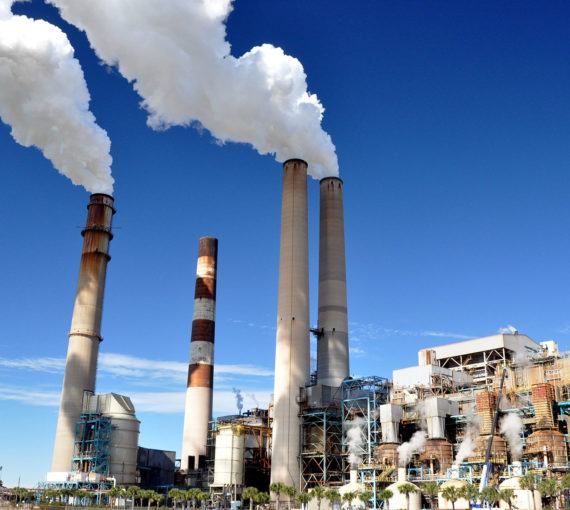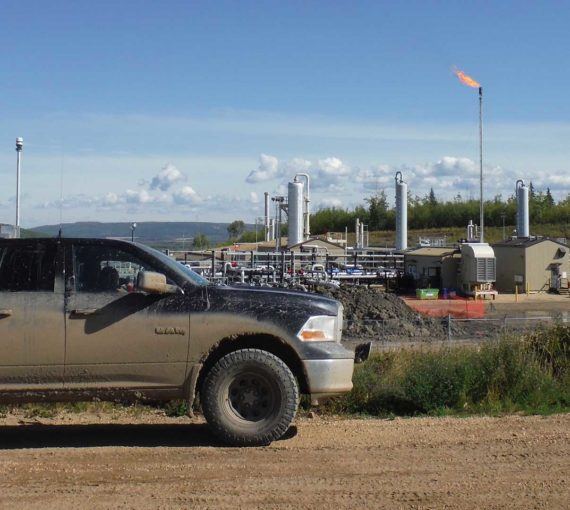
Canada has taken a major step in cleaning up its oil and gas sector. We’re the first country to commit to methane emission regulations for the industry, marking an important shift toward climate protection.
The new regulations help uphold a major plank in the Pan-Canadian Framework on Clean Growth and Climate Change, under which Canada committed to cutting oil and gas industry methane pollution by 40 to 45 per cent over the next eight years. The policy represents the most significant contribution to holding industry accountable for reducing its greenhouse gas emissions.
Why is this a big deal?
Methane is one of the most powerful greenhouse gases. Over a 20-year period, it’s 84 times more potent than carbon dioxide as a climate pollutant. Scientists estimate it’s responsible for 25 per cent of already observed disruption to Earth’s climate, so reducing it has been prioritized as a top global climate solution.
The oil and gas industry is the largest emitter of methane here and in many countries. That’s why the federal regulations are so important and why they must be strictly enforced.
Last year, the International Energy Agency reported that the oil and gas industry emits about 76 million tonnes of methane worldwide every year. It also found 75 per cent of those can be easily reduced, and about 50 per cent could be reduced at no net cost, or even for a profit, because industry can sell the captured gas.
Drew Nelson — a leading world expert on methane and the Environmental Defense Fund’s international affairs director and a former U.S. climate negotiator under the Obama administration — told the David Suzuki Foundation Canada’s role is important: “Reducing oil and gas methane emissions is the single most effective action we can take to prevent the warming of our climate today. If every country around the world followed Canada’s methane reduction lead, it would have the climate impact of closing one-third of the world’s coal-fired electricity plants.”
Canada must act because scientific evidence shows the problem is bigger than claimed.
Peer-reviewed research from the David Suzuki Foundation and others confirms that federal and provincial governments and industry vastly under-report our oil and gas industry’s methane emissions. Research published last year by the Foundation and St. Francis Xavier University found methane emissions from B.C.’s oil and gas industry are at least 2.5 times higher than industry and government report.
Solutions are at hand. Cutting methane emissions from the oil and gas sector is one of the least expensive, most effective ways to address climate change. If industry cleans up leaking methane, it will create jobs and save the very resource it wants to sell. Yet many in industry, even with economic benefits, are reluctant to fulfil their climate responsibilities, so we need government intervention.
For the new federal regulations to be effective, government must hold provinces accountable for meeting or exceeding the benchmark. But provinces are going in different directions on how they will shrink methane pollution. Some are proposing concessions to the oil and gas industry that, if enacted, would result in fewer emissions reductions and create imbalances across the country.
The B.C. government, on the other hand, is positioning itself as a leader. It has committed to extending the carbon tax to methane emissions, as outlined in its 2017 confidence and supply agreement. But industry pressure to enact weak regulations could also occur in B.C.
B.C. should seize this opportunity and implement strong provincial regulations, apply the carbon tax to methane emissions and create jobs in oil and gas to clean up the industry.
With these federal regulations, the B.C. government has a clear responsibility: to set the gold standard for climate protection as citizens, communities and industry work to reach our country’s climate targets while modernizing our economy.
It’s been a long time since B.C. led North America on climate with its groundbreaking approach to building a cleaner economy through the carbon tax — an approach that has shown results. The province now has a chance to lead again by setting the course for national efforts. The test will be whether the federal government can remain firm in the face of industry opposition and require provinces to achieve verifiable progress to shrink methane pollution consistent with Canada’s Paris Agreement climate target.



